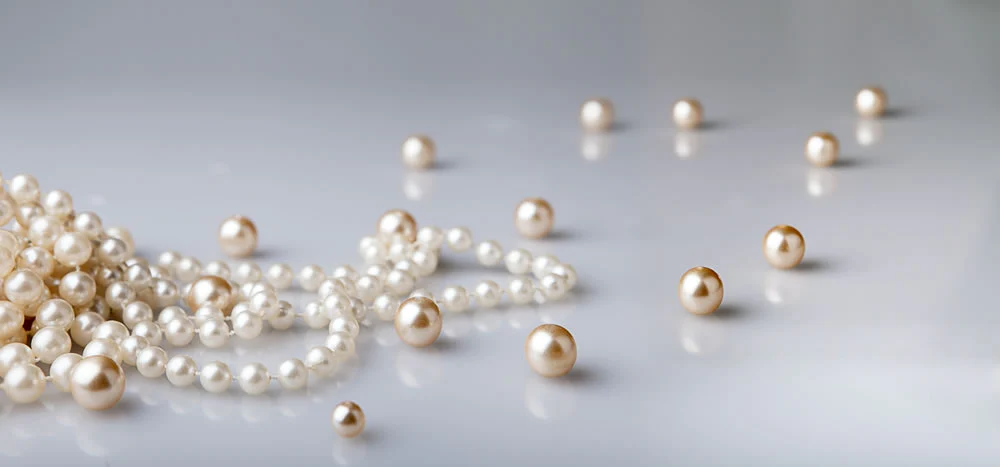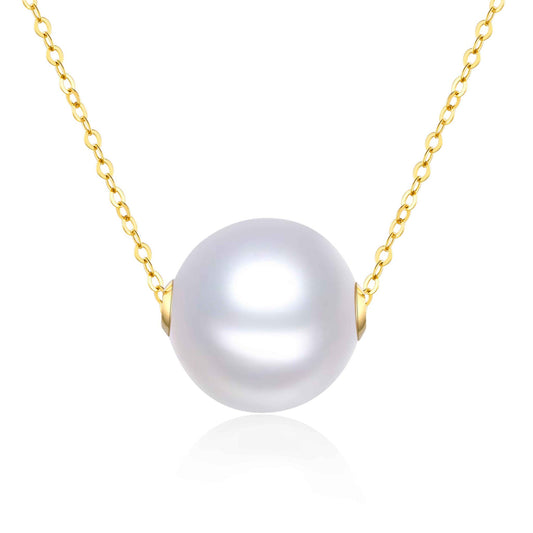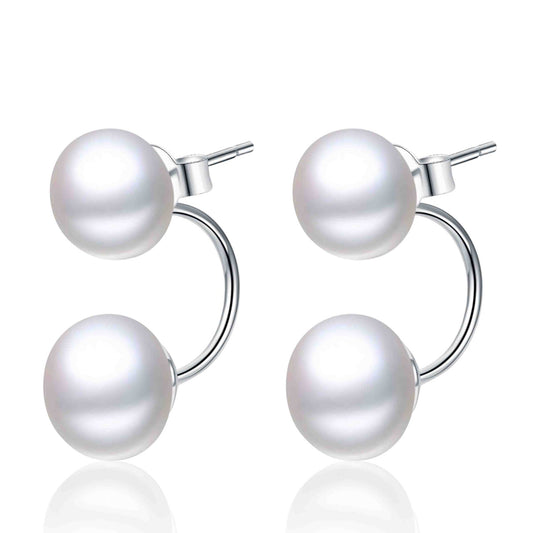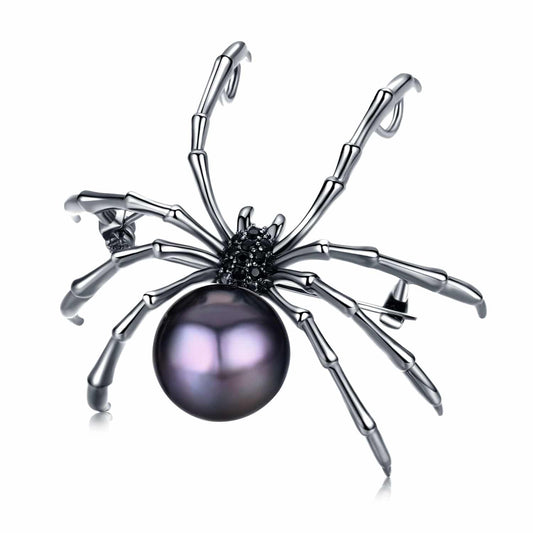
10 Ways to Tell a Real Pearl
Share
Pearls have always been one of women’s favorite jewelry. In the marketplace, there’s a wide range of pearl jewelry and it’s often difficult for consumers to distinguish the real pearls from the fake ones. We can help.
The 10 Ways to Tell a Real Pearl
Learn the first five easy Pearl Identification rules!
-
Observation
Pearls are unique. When you look at each pearl on a necklace, the color, shape, size, and luster the pearls are not all exactly the same. Because they have been made by nature, each pearl has its individual “personality.” Fake pearls usually have the same size and shape. -
Shape
True pearls do not have a particularly neat shape. Naturally grown pearls are very difficult to have a necklace all the same shapes, especially those that are rounded or pearls that is particularly uniform in size. The perfect pearl is so rare, that’s why perfect pearls with big size and good luster usually sell for hundreds of thousand dollars. -
Touch
Even when the weather is hot, true pearls have a sense of cool. Plastic beads generally feel warm. Real pearls give a sense of cool when they are in your hand, while imitation pearls have a sticky feeling when rolling and sliding. If the imitation pearls are pure glass beads, the weight is usually heavier than real pearls, but if imitation beads are waxed glass, it will only have about half of the weight of real pearls.If you hold one pearl in each hand (could be from the same necklace) and rub them against each other, there is a sense of an uneven feeling (jerky rough feel) If the pearls are real, then a pearl powder will be produced when you rub them together. But if the pearls are fake, they will have a slip or smooth surface. An easy way to tell if your pearl is real is trying to rub it against your tooth, and if it’s real pearl it felt gritty. NOTE: don’t be afraid to rub the pearls together, it will not harm your real pearls. Just blow away the powder and your pearls will still have their usual luster. That’s why another easy way to tell if your pearl is real is to use your nail to scratch the pearl surface, and if you see pearl powders that should be real. After you scratch it, retouch it smoothly and the scratch should disappear and the luster comes back -
Sound
When you shake and knock an entire string of pearls, the real pearls will have a softer more comfortable sound and the fakes will sound thin or tinny. If you bite a real pearl and scrape it slightly with your teeth, you can feel and hear the sandy, grainy surface of the pearl. But a fake pearl will be slippery with no sound. And if the fake is plastic, sometimes your teeth will make depressions in the pearl. -
Magnifier observation.
Use 5x or 10x magnifying glass to observe the pearl surface, if they are real pearls (including natural pearl and cultured pearls), the surface seems to be grown as grain, like the wind over the dunes; but, if you see the rugged eggshell surface, then they are imitation pearls.
You’ve learned the first five! What did you discover about your pearls?
Let us know in the comments below!
The next 5 ways are for Professionals only.
(USE CAUTION: Non-Professionals may damage pearls).
-
Knife
With a knife or scissors scraping the surface of the real pearl, it will only fall some powder; and in the artificially coated beads scraping, blowing a layer of film will expose the true face of the glass; if uncoated glass beads scraping action, it just gives a smooth feeling. -
Fire
When you mild burn the pearls with a lighter, surface seems to be intact, still shiny, no odor; when burning time is extended to two minutes or more, there would be a popping sound, a shedding phenomenon occurs when the layer of beads with a fingernail scratch. Plastic imitation pearls mild burning smell bad, pearls lose their luster, and a burning fire occurs, while the surface is like a black pot, washed off the surface, exposing the bead core. -
Bounce test
Drop the pearl from 60 cm height on a piece of glass, the rebound height should around 35 cm. Under the same test conditions, imitation pearls’ rebound height is much worse. -
Chemical solution
Put the pearl into acetone solution, glorious should be as usual. Imitation pearls will lose total luster within one minute under the same conditions. Pearl’s relative density is about 2.73 and can dissolve in hydrochloric acid, but no reaction in case of imitation pearls. -
Polarizer observation
Pearls are almost all light or semi-transparent; while imitation pearls have a transparent layer and do not have a uniform torus.
Will you be taking your pearls to have a professional check them? Tell us in the comments.
What Are Real Pearls?

The real pearls are grown in the ocean or freshwater shellfish, suffering (or artificial implants) body and foreign objects friction stimulation, the fluid secreted by the body to foreign material forms layers of pearls wrapped the ball formed a body.
There are two categories of pearls: Natural pearls and cultured pearls.
The cultured pearl market is broken down into saltwater cultured pearls and freshwater cultured pearls. About 99% of the pearls on the market today are cultured freshwater pearls.
In terms of color, there are natural colored pearls and artificially colored pearls.
The biggest difference between saltwater pearls and freshwater pearls is the structure: whether natural or cultured, freshwater pearls are nuclear-free (except for Edison pearls), all the ingredients are by nacre composition, so most of the pearl powders used today are made of freshwater pearls.
The saltwater pearls are nucleated, which generally consists of nuclear mussel shells trotters ground, covering the surface nacre thickness 0.1-0.3 mm. Therefore, the saltwater pearl powder would consist of a small majority of nacre shell powder, which is not good for medicinal or cosmetic products. If you need 100% saltwater pearl powder, you first must remove the core, so the cost is very high and the process is not easy. That’s also why saltwater pearl powders are more expensive than freshwater ones.
Because saltwater pearls always have a kernel, most of their regular shapes are round. As they have a shiny crystal clear center, they are easy to be used for ornaments or jewelry. Only a small part of the irregular shape saltwater pearls are used to make pearl powder, so the whole production quantity is far lower than freshwater pearls.
Saltwater pearl production is very low, as generally, three mother-of-pearl shells produce only one pearl. As you can imagine, freshwater pearl production is relatively high. You can easily find 6-8 freshwater pearls inside the mother shell. That’s part of the reason why the price of saltwater pearls is so much higher than freshwater pearls. In the past, most freshwater pearls are rice-shaped or irregularly shaped with a low shiny effect, so there is only a small part of freshwater pearls that will be used to make ornaments or jewelry. Today, with pearl farm technology development, freshwater pearls could have the same quality as saltwater pearls.
What Are Fake Pearls?
The so-called fake pearls refer to all or part of the artificial production of imitations and alternatives; because of their strong simulation to real pearls, these fakes often cause difficult true chaos. There are fake pearls such as waxed glass beads; solid glass beads or glass beads coated fake pearls.
Most fake pearls on the market today are made in the following six ways:
- Waxed glass beads imitation – that is full of paraffin in the hollow of opalescent glass round pellets. Such imitation bead density, generally less than 1.5 g / mm3, the weight is very light and can be distinguished easily.
- Solid glass beads imitation – Coming milky solid glass balls soaked in the “pearl of semen” together. Drilling observed at 15 times the magnifying glass, you could see a very thin layer of “pearl of semen”. If you struck with a needle it will fall into pieces, but not the small scale-like powder.
- Plastic beads coated imitation – that is plated with a thin layer “pearl of semen” in milky white plastic balls, the surface was coated with a magnifying glass like pimples evenly distributed, as natural pearls and cultured pearls as the real smooth paste. If you stuck with a needle, not fine powder would be found.
- Imitation pearl beads – because it is made of polished shells with nacre on thick, very round, has a similar pearl luster, its density has no big difference from real pearls. The best way to identify it is to put it before a strong light source; under the light transmittance, you can often see obvious parallel strips, which are traces of pearl powder into a layer.
- Shell powder synthetic beads – by definition, it is made with the shell (black shells removed) after adding powdered adhesive inside.
- Fake Edison pearls – Some local farmers and retailers decided to capitalize on this popular trend. They created what’s called “Live mussel opening parties” following the same recipe, but by advertising their pearls as Edison Pearls, creating the perception that these pearls would be of the same quality the market has come to expect from Edison Pearls.They use the same techniques they learned from the inventor of Edison Pearls, but with one big difference – and this deviation is making all the difference when it comes to the quality of the pearls. Instead of leaving the pearls inside the mussel for at least three years as they should, they sell the pearls, or the mussels with pearls inside, after only six months. This means that the nacre thickness of these pears is extremely thin – hardly covering the core. Although the pearls look great when taken out of the mussels, these pearls will lose their luster and color within a year. They will easily get damaged as the nacre is not thick enough to withstand normal wear and tear. And worst of all, because of the hype around these parties, they may sell the pearls at highly inflated prices – even more than what real, high-quality Edison Pearls are sold for. These pearls are not real Edison Pearls. Their cultivation process may start off the same way, but the quality is severely wanting, and they won’t pass the strict quality criteria set by the inventors themselves.
Did you know about these differences? Leave us a comment.
At Timeless Pearl, all jewelry is made with real pearls directly from sustainable pearl farms. If you wish to learn more about how to define the value of a pearl, please take a look at our pearl grading system, and welcome to our online store to see our timeless elegant pearl jewelry.
After you’ve used our pearl grading system, let us know what you find out!



